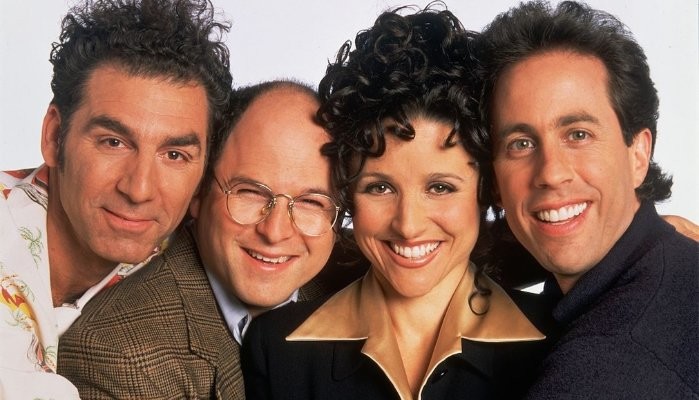
The Serious Role of Humor in Product Management
When Jerry Seinfeld was asked what makes people laugh he said “When a story is going one way and then suddenly it is not…that’s what makes people laugh”. Jerry Seinfeld took stories from daily life, such as standing in a queue, eating in a restaurant, asking a neighbor for milk, giving clothes for dry cleaning – mundane stories that we assumed will go a certain way, but all of a sudden went the other way. He gave them twists and ends we didn’t expect. That is what he used to create humor.
Every interaction in our lives, be it with a person or a product, is an act of creating or absorbing a story. When you scroll through a screen clicking on buy, like, share, apply, connect, submit, upload, or when you read an error message, a success message, or an email subject line....with every one of such hundreds of micro-interactions you build a story about the product in your mind. It happens subconsciously and continually.
Now, every week the Product Management team puts dozens of decisions into motion. Some of them may work for one kind of user but not for another. The greater the different kinds of users who use the product, the greater the chances that the story of the product can - at some touch point or the other, for some person or the other, in some small way or a big way - go the way that doesn't serve the user well. That sows the seeds of user disengagement.
But it is hard to predict which small or big decision could sow such seeds. Which is why during any discussion and meeting a Product Manager needs to leapfrog into the future of even the smallest of ideas and consider the multiple consequences it can have on the story in the mind of any user. Then, if necessary, the Product Manager has to reject that idea.
Product managers who have the strongest, clearest hold on what the story needs to be also have the most fertile imagination to grasp the many ways it can be derailed, contradicted or reversed. The primary responsibility of the Product Managers is to be the zealous guardians of the story to be created in the users minds. To keep that core story on track, they have to, in meeting after meeting, week after week, keep rejecting ideas more often than not.
However, rejecting ideas is a challenge. You can risk sounding closed or opinionated. It could discourage team members to contribute. But not ruling out ideas that need to be ruled out hurts business in the long run.
The best way to rule out an approach or an idea is to describe, by painting a vivid, crisp, witty narrative of the surprise or dismay the user would feel if that idea were to be implemented. And this is best understood by others when this narrative is spoken at the right time during a discussion. This combination of an exaggerated twist in a story from the point of view of the user, and of right timing during the meeting creates humor.
An integral aspect of most Product meetings and discussions I attend is humor in its various forms - the understated kind, the witty kind, the one with loud guffaws, and even the one where we almost fall off our chairs with tears in our eyes. The joke is always on ourselves and our ideas. We could find humor in the possible outlier consequences of an algorithm we are designing, or in a decision we took last month that looks silly today.
Humor is a great glue. It brings teams together. The Technology, Product, Sales, Marketing, Operations teams may speak a different language, but humor gets understood the same way. Humor encourages a free flow of ideas even if most of them get turned down.
Humor is also a great loosener. It helps passionate people get less wedded to their ideas. It helps them accept rejection with a laugh and take the failure of their pet projects in their stride. It makes every Monday seem like a fresh start bubbling with initiative.
The product management team has to pick from the many conflicting choices they face every week, and manage the disagreements that those choices entail. Humor is one great way to cut through that clutter, maintain focus on users, and most importantly, swiftly reject whatever makes the story of the product go the other way.
Administration Affairs Generalist @ Renault Türkiye | Data Management, Employee Experience, Work Analysis 4 AI
7yIt's not the first time that I realised humorous chats develop analytic thinking. On the other hand, I could not convert this thought to a well-written note or blog. Finding a more specific connection between customer experience and humourous twists is gold. Thanks a lot.
Automation Test Specialist(Selenium, Tosca) , Full Stack Web Developer from Udacity , Product Management Fellow from NextLeap, Certified Scrum Product Owner & Scrum Master, working in Natwest Group
7yVery well written and humor should always be there even in presentations as it adds to more understanding than normal text...
Senior Manager: Compliance, Audit, Regulatory
7yLove this! Ping Moustafa Hallani and Reuben Wakeley, PMP
Ramapo College/MS (Education Technology) Fairleigh Dickinson University/BA-Business (Magna Cum Laude)
7yJust be mindful of the difference between sarcasm and humor. Humor builds up. Sarcasm tears down. Sarcasm comes from the Greek word "to tear flesh". Humor should be a positive experience for all, ideally.
Senior Professional Technical Writer, Gainwell Technologies
7yJared's got it right: https://66.media.tumblr.com/13e6d8cb24c2bbca29ddcda7bf150a15/tumblr_nrusqurWQY1tu1beso1_500.jpg